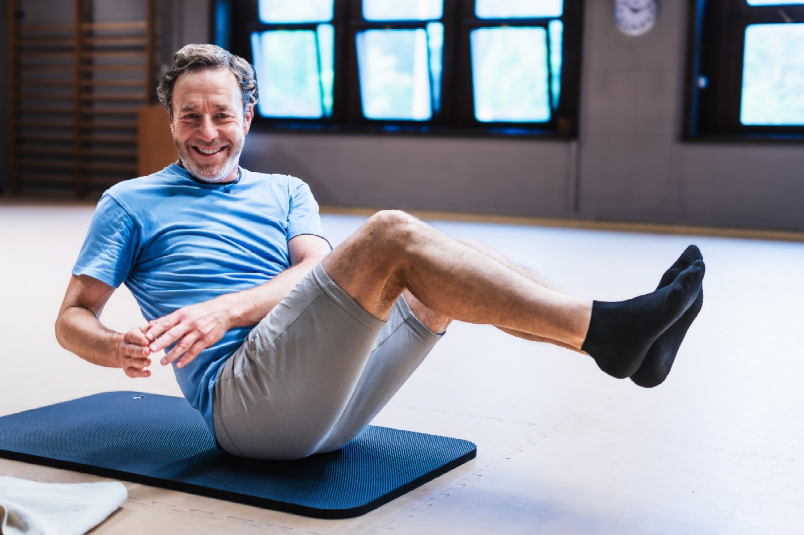Core strength is a cornerstone of athletic performance, particularly for endurance racers. Whether you’re a marathon runner, cyclist, triathlete, or ultra-distance competitor, a strong core provides the stability, efficiency, and power needed to excel. While often overlooked in favor of more obvious metrics like speed and stamina, core strength plays a vital role in enhancing endurance, reducing injury risk, and maintaining proper form during long races. Kevin Morgan delves into the importance of core strength for endurance athletes and offers effective exercises to build a solid foundation.
What Is Core Strength?
The “core” refers to a group of muscles that stabilize and support the spine, pelvis, and trunk. It includes:
- Abdominals: Rectus abdominis, transverse abdominis, and obliques.
- Lower Back Muscles: Erector spinae and multifidus.
- Hip Muscles: Gluteals, hip flexors, and pelvic floor.
- Deep Stabilizers: Diaphragm and intercostal muscles.
While these muscles don’t directly power forward movement like the legs or arms, they act as a foundation, enabling effective force transfer and efficient movement.
The Importance of Core Strength in Endurance Racing
1. Improved Running and Cycling Efficiency
A strong core enhances running and cycling mechanics by stabilizing the torso and pelvis:
- For Runners: Core stability prevents excessive torso rotation and hip drop, which can waste energy and cause imbalances.
- For Cyclists: A stable core allows for more efficient power transfer to the pedals without unnecessary upper body movement.
2. Enhanced Posture and Form
Endurance races often last several hours, requiring sustained posture:
- Core engagement reduces fatigue-related slouching, helping maintain optimal form and breathing efficiency.
- Proper posture minimizes the risk of overuse injuries caused by poor biomechanics.
3. Greater Force Transfer
The core acts as a link between the upper and lower body:
- For runners, a strong core facilitates efficient arm-leg coordination.
- For swimmers, the core generates rotational power during strokes.
- For cyclists, it anchors the body during sprints and climbs, maximizing pedaling efficiency.
4. Reduced Risk of Injury
Endurance sports involve repetitive motions that stress specific muscle groups. A weak core can:
- Lead to compensations in other muscles, causing strain or injury.
- Exacerbate imbalances, contributing to issues like runner’s knee, IT band syndrome, or lower back pain.
Core Exercises for Stability and Power
To build a core that supports endurance performance, focus on exercises that improve stability, strength, and dynamic control. Here are some of the best core exercises for endurance athletes:
1. Plank Variations
Planks strengthen the entire core by requiring static engagement of multiple muscle groups.
- Standard Plank: Start on forearms and toes, keeping your body in a straight line. Hold for 30–60 seconds.
- Side Plank: Lie on your side with legs stacked, lift your hips off the ground, and hold. This targets the obliques.
- Plank with Shoulder Taps: In a standard plank, alternate tapping each shoulder with the opposite hand while maintaining stability.
2. Dead Bug
The dead bug enhances core stability while promoting coordination between limbs and core.
- Lie on your back with arms extended toward the ceiling and knees bent at 90 degrees.
- Slowly lower your right arm and left leg toward the floor, then return to the starting position. Alternate sides.
3. Russian Twists
This rotational exercise strengthens the obliques, which are crucial for balance and power transfer.
- Sit on the floor with knees bent and feet lifted slightly off the ground.
- Hold a weight or medicine ball, twisting your torso side-to-side while keeping your spine neutral.
4. Bird Dog
The bird dog improves core stability and strengthens the lower back.
- Start on all fours, ensuring your back is straight.
- Extend your right arm and left leg simultaneously, hold briefly, and return. Alternate sides.
5. Glute Bridge
The glute bridge targets the glutes and lower back, both essential for hip stability.
- Lie on your back with knees bent and feet flat.
- Push through your heels to lift your hips until your body forms a straight line from shoulders to knees. Lower and repeat.
6. Hanging Leg Raises
Hanging leg raises strengthen the lower abdominals and hip flexors, key for endurance activities.
- Hang from a pull-up bar with straight arms.
- Lift your legs until they’re parallel to the ground, then lower with control.
7. Stability Ball Rollouts
This exercise strengthens the deep core muscles and improves balance.
- Kneel with your forearms on a stability ball.
- Roll the ball forward, keeping your core tight, then pull it back to the starting position.
Incorporating Core Work into Your Training Routine
To reap the benefits of core training, consistency is key. Here’s how to integrate it into your endurance program:
- Frequency: Perform core exercises 2–3 times per week.
- Duration: A focused 15–20 minute session is sufficient.
- Progression: Gradually increase the difficulty of exercises by adding resistance, extending hold times, or incorporating dynamic movements.
- Alignment with Goals: Tailor exercises to your specific sport. For example, runners may focus on rotational stability, while cyclists might prioritize exercises that enhance lower back strength.
Practical Tips for Core Training Success
- Engage the Core During Endurance Workouts: Practice maintaining a tight core during runs, rides, or swims to improve neuromuscular connection.
- Focus on Form: Quality over quantity. Avoid letting fatigue compromise your technique.
- Incorporate Functional Movements: Choose exercises that mimic sport-specific motions, like weighted twists for runners or planks with leg lifts for cyclists.
Core strength is a critical yet often undervalued component of endurance racing. By building a stable and powerful core, athletes can improve efficiency, reduce injury risk, and sustain better performance throughout long events. With targeted exercises and a consistent routine, you can transform your core into a powerhouse that supports every stride, stroke, or pedal. Prioritize core training as part of your overall endurance strategy, and the results will speak for themselves—on the trail, road, or race course.
